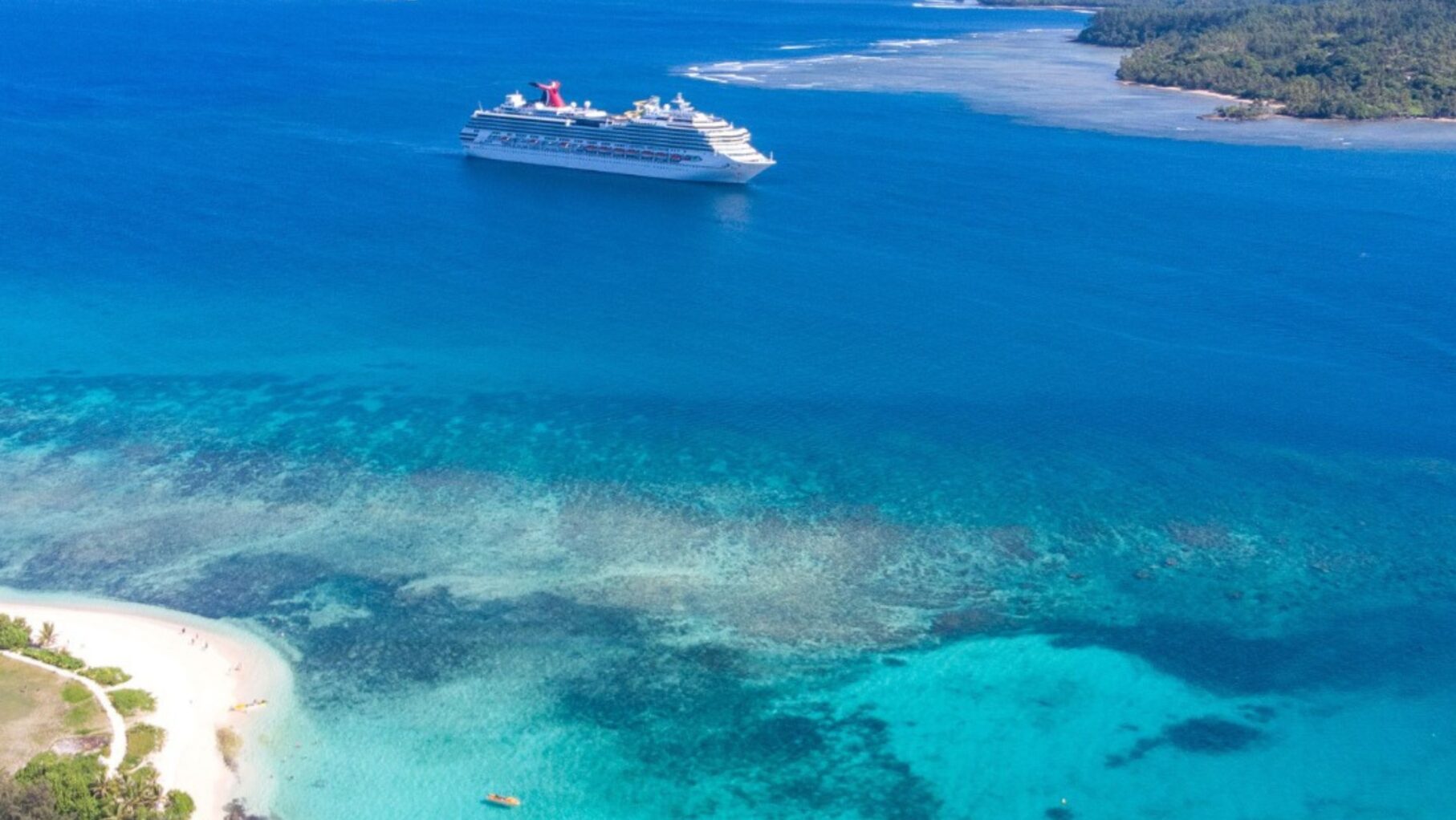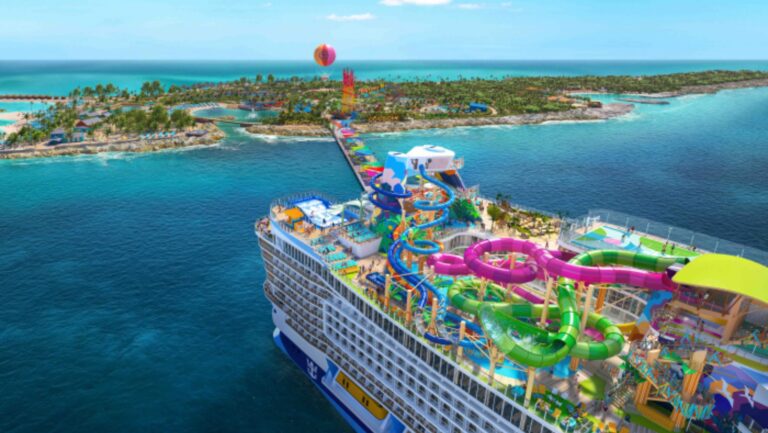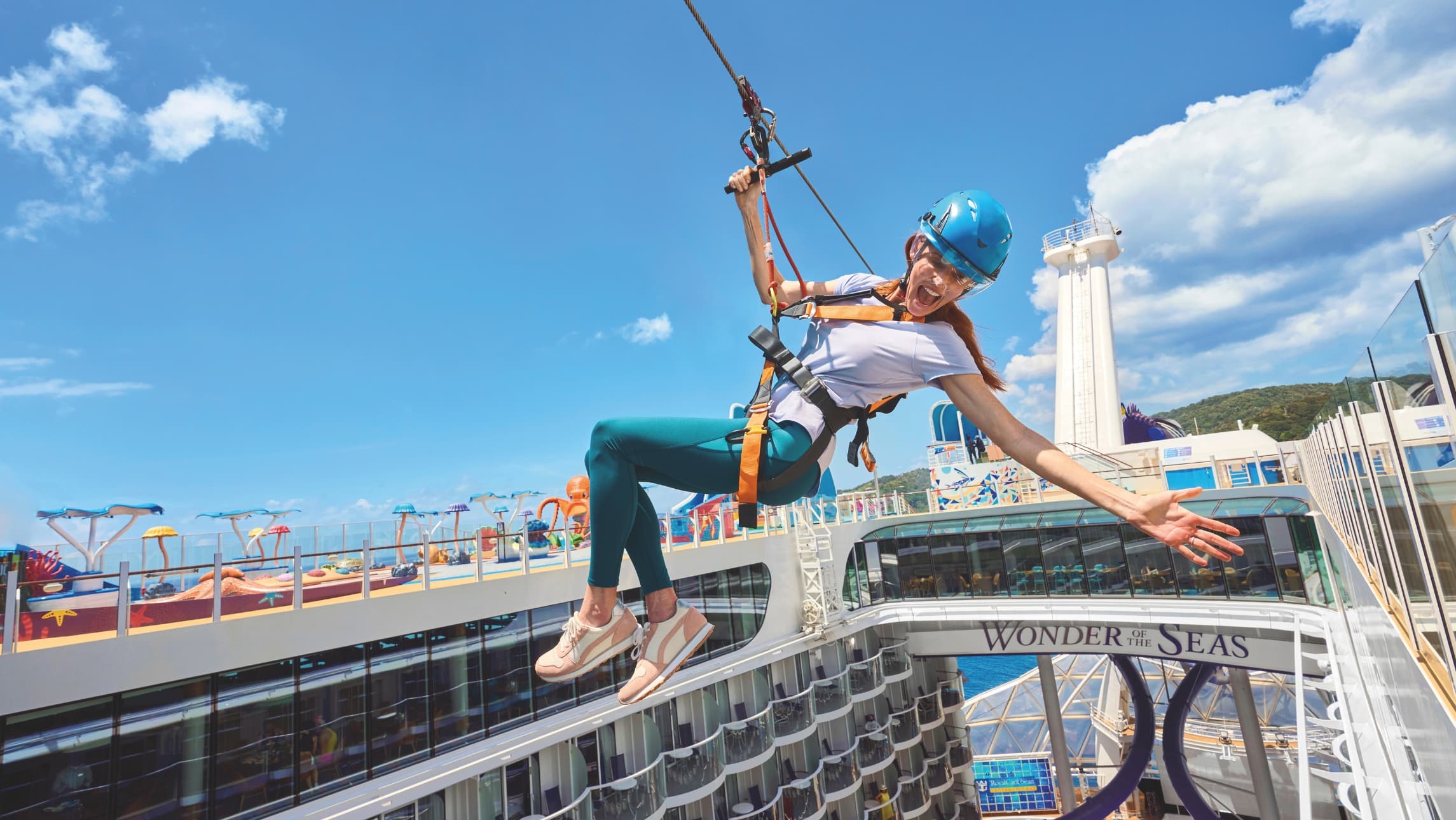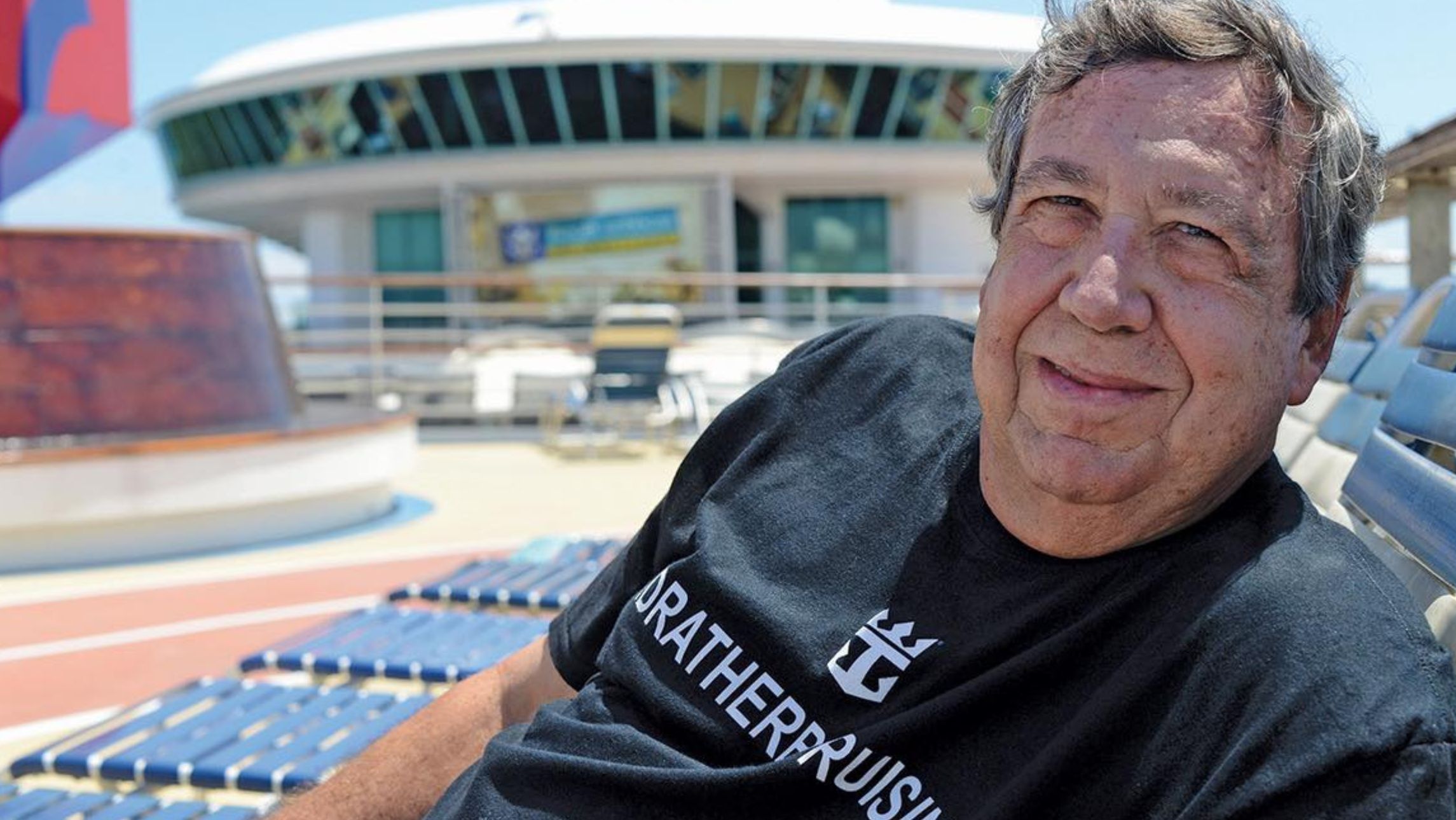- Europe is seeing falling numbers of cruise ship visits, as cruise lines opt to sail the Caribbean instead.
- Three years ago, Europe would see about 7000 cruise port stops a year more than the Caribbean, now it’s almost exactly level.
- Cruise lines are looking to private islands in the Caribbean – and avoiding cruise ship protests in Europe.
Protests about over-tourism, taxes and high charges are taking a huge toll on the number of ships visiting Europe as American based cruise lines move their vessel home.
Three years ago, Europe would see 7000 more cruise ship visits a year than the Caribbean. Today, it’s almost even, with the momentum swinging towards the Caribbean.
Many factors have played their part, but it appears that overtourism and both citizen and government resistance to cruise ships is pushing cruise ships out of Europe. “We go where we are welcome” has become a mantra from big ship line executives. And it’s hard to blame them.
Several European countries and cities have imposed restrictions or outright bans on cruise ships to address environmental concerns, overtourism, and the impact on local communities.
Amsterdam recently decided to ban cruise ships from its city center to reduce pollution and overcrowding. The city aims to move its cruise terminal by 2027, part of broader sustainability efforts. Venice banned large cruise ships from its historic center in 2021 to protect its fragile lagoon ecosystem, redirecting ships to nearby industrial ports
Similarly, Barcelona has restricted the number of cruise ships docking daily and imposed environmental regulations. Norway plans to ban high-polluting cruise ships from its fjords by 2026 to preserve their natural beauty and ecosystem. Additionally, smaller ports in France, like Bordeaux, are advocating for similar restrictions to manage their environmental footprint.
Dubrovnik in Croatia has restricted cruise ship arrivals to manage overtourism. The city limits the number of passengers disembarking per day to 4,000, prioritising sustainable tourism.
Santorini, Greece, implemented a cap of 8,000 daily cruise visitors to ease strain on infrastructure and the environment. Other regions, including parts of Italy’s Cinque Terre and French Riviera towns, are also exploring restrictions due to environmental concerns and local pushback against overcrowding.

In the Caribbean cruise lines are welcome. Private island infrastructure, higher profits and better relations with governments are creating an environment for cruising with big ship like Royal Caribbean’s Icon of the Seas.
The three major cruise companies, Royal Caribbean Group, Carnival Corporation, and Norwegian Cruise Line Holdings are all reporting profits at record levels, despite the industry being devastated by the pandemic just a few short years ago.
However, this isn’t happening by accident. Cruise lines are increasing profits through rezoning their ships, standardising itineraries, increasing onboard offerings and plenty more activities, and it appears more money is to be made in the Caribbean than Europe.
While cruise passengers are greeted across the Caribbean by seas of volunteers, local handicrafts, and cultural ceremonies are more, the reception in Europe looks more like blasting water pistols at tourists in Barcelona, climate protests in Italy, and elected officials in the Greek Islands begging for caution as the walkways become crowded shoulder-to-shoulder.
Cruise lines invest in the Caribbean
The most prominent example of a cruise line succeeding in the Caribbean is the aptly named Royal Caribbean and its venture CocoCay. CocoCay is an island completely private to the cruise line, decked out with all sorts of amenities and all of Royal Caribbean’s best and biggest ships head there.
Royal Caribbean was going to install another perfect day at Lelepa in Vanuatu, which would be reached by Australian cruises.
However, the cruise line is now focussing on a new venture in Mexico. The cruise line has invested hundreds of millions into Perfect Day Mexico and says it’s been closely monitoring feedback at CocoCay to make Perfect Day Mexico even better.
Bob Levinstein, CEO of cruise marketplace Cruise Compete explained to Reuters why this is so profitable.
“By having their own port and not having to pay passenger fees and government taxes, they are able to capture more of that total revenue.”
Kenneth Kuhrt, executive vice president at Ariel Investments echos the same sentiment: “Royal is getting some of the best returns in all of cruise right now, and the big edge they have is CocoCay, and everybody else is trying to catch up.”
The Royal Caribbean International CEO Jason Liberty makes no secret of this, telling investors: “Perfect Day at CocoCay has been a game changer for both our guests and our business”, he says the size is seeing “sizable, significant returns”.
The Royal Caribbean brand CEO Michael Bayley says Royal Caribbean’s more exclusive offerings have had success beyond their ‘wildest dreams’.
“People want to sail on the ships that go to Perfect Day and they want to sail on the ships that go to the Beach Club. And I think it’s proven to be incredibly successful. When you wrap that up with the kind of hardware we’ve introduced, for example, Icon, which has been an unbelievable success. I mean, beyond our wildest dreams success.”
However, Royal Caribbean is far from the only cruise line in the game.
Carnival is going to invest more than $930 million to develop ‘Celebration Key’, a private islam in the Bahamas.
In total, there are 12 private island destinations across all cruise lines in the Caribbean, with lines such as Princess, Norwegian Cruise Line, and Holland America Line all having their own offerings. NCL in particular is driving investment forward,
Due to the profitability of a private island, once cruise lines have them built and successfully operating on a large scale, it makes sense to build their itineraries around them. Royal Caribbean’s newest and biggest ships are Icon of the Seas and Utopia of the Seas, both of which more or less sail year-round to CocoCay, as well as other destinations in the Caribbean.
Another profitable element for the cruise lines is that the Caribbean offers the opportunity of year-round sailing due to the attractive climate. Year-round sailing tightens profits through less fuelling costs, less marketing and operational costs, discounts from suppliers and more..
Other destinations such as Alaska and Europe that have more fixed cruise seasons aren’t able to offer this.
This means once cruise lines have their private islands built, they can simply set up camp for the year, as Royal Caribbean is currently doing in the Caribbean.
Royal Caribbean has made clear its goal for every Caribbean itinerary to eventually have a visit to a private island, and they’re already well on their way.
Bayley says: “ The demand we’ve seen for, for example, Utopia sailing to Perfect Day has been extraordinary. So we think we’ve got the formula figured out. And our plan is to continue to evolve and develop that formula over the coming years.”
The true key to know where cruises will head in the future is to look at where cruise lines are splashing and their cash, and right now, it’s all in the Caribbean.

Why aren’t cruises in Europe?
Europe is going through an overtourism crisis. Whether you think it’s a scapegoat or a legitimate cause, a lot of the fingers are being pointed at cruise.
A significant difference is that Europe doesn’t rely on the tourism income. The European Travel Commission reported that more than $1.5 trillion dollars was brought in by foreign visitors in 2024, with a 14% increase in tourists visiting from 2023. These increases were particularly prevalent in Spain, Greece, Italy and France, four countries that are extremely popular for cruising.
While Caribbean nations have less tourism from other sources and less wealth in general than major European nations, they have more reliance on cruise tourism than Europe does.
Cruise lines have to plan their itineraries years in advance, meaning they need to plan their cruises in regions that are stable with guaranteed availability and fixed regulations, and it appears many cruise lines no longer feel that Europe is ticking these boxes.
Cruise ship passengers such as Anne Thimm from Northern Carolina told Forbes they don’t feel welcome anymore when they cruise in Europe.
“It was kind of like they’re sick of us. They’re sick of the cruisers”, she said after a trip to Spain and Portugal.
Marie-Caorline Laurent, European Director of CLIA spoke on the issue of cruise in Spain, as port protests grow across the country.
“There will be some consideration of adapting the itineraries if for some reason we feel that all passengers will not be well-treated.
“Tourismphobia is not only a problem in Spain, but also in France and other Mediterranean countries.
“But visitors are increasingly sensitive and the violent attitudes that have been seen in places like Barcelona have an impact on the destination’s reputation.”
Meanwhile in France, environment protest groups blocked a ship from visiting Marseille, forming a chain of canoes along the water that resulted in multiple ships being unable to enter the port.
These environmental protests are also common across Europe. Liberty says: “We’re not in any way an ostrich here, putting our head in the sand”, Liberty mentions the company is “very well aware” of some of the attitudes towards cruise in Europe and that Royal Caribbean is “trying to be part of the solution”.










The bankrupt Victorian Government is doing everything possible to discourage cruise lineres coming to Melbourne.
From insisting passengers purchase cards ( Mikey cards) to travel on the local public transport “system” to hiking up port prices to pay for upgrades to its woefully inadequate Princess Pier.
Minister Horne and Treasurer Pallas should lose their jobs over this scandal.
Unfortunately the newer ships don’t get to Australia, with the exception of Celebrity Edge
Will be interesting what cruising out of Australia. There seems to be a reduction in cruise ships visiting or home Port in Aus in the next few years! Also the cruise ships more recently (in Au
( Have decided not to include rippling, on board pricing in USD and drink prices + 15%. Old ships that are falling apart. Curtains in bathrooms for showers instead of glass. USd on board pricing. Why would you even think about cruising in Australia!
Good riddance! Just sorry for the caribbean local fauna, flora and local costumes and traditions. Goodbye to those, was good while they lasted.
And any other Cruise Ship Companies that would like to send their Cruise ships down here are also very welcome
Well Virgin Cruises are always welcome back down here in Burnie , Tasmania and not sure why they said theyr not intending on coming back down here although I’d like to know why .
But anyway it’s always been great to have their ships in town down here and to have their cruise customers ,tourists walking through our town and other places around and to be able to speak to them . It’s always great to speak to them .
The cruise industry in Australia needs to push for shore to shop power availability, to reduce pollution in port and assuage the concerns of local communities.
Well Australia and the South Pacific would welcome some of the newer ships down under.
Brisbane is crying out for a mega ship for at least the summer season.
Too many 20+ yr old ships in town.